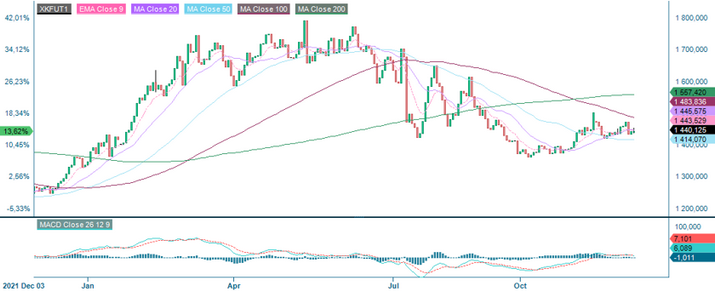Soybeans at the crossroads


Soybeans as a commodity have one primary customer in China, a customer that makes up almost 60 % of the total demand. This demand has been under pressure, with numerous exogenous shocks impacting imports. Furthermore, on the supply side, the three top producers in Brazil, USA and Argentina have had different factors impacting the production fields
China locking down again caused the bull run that lasted the first half of 2022 to grind to a halt. With prices trending downward, the more recent protests saw sentiments shift, with faith in strong demand resurging. China has since eased some restrictions in certain cities, but demand is still expected to suffer as the somewhat closed economy struggles to reopen.
On the supply side, the biggest supplier for China in Brazil is coming off a previous poor crop season, with yields in January of this year being lower than expected. While the current planting season is underway, yields for January and February look to be booming. With favorable weather and higher acreage, supply is looking set to push prices in the downward direction.
The second-largest producer and second-largest consumer in the USA has had a booming year, mainly driven by the surging renewable diesel industry. Soybean oil is one of the primary ingredients, and as production capacities for renewable diesel have more than doubled since the beginning of 2022, demand is high. This production pushes the crush margin and thusly escalates prices.
The Argentinian supply is the potential decider that can edge out the factors described above. As a safeguard against inflation, farmers in Argentina have been stockpiling their soybeans. As of late November however, the government instituted a preferential exchange rate scheme in order to bolster central bank reserves. This pushes farmers to offload supply and bolsters export.
Considering the above, the demand seems stable and robust in the USA while being shaky in China. On the other hand, supply seems both strong and poised for a potential sharp increase. Putting it all together, although prices might see short-term positive momentum owing to developments in China or Oil prices, bolstering supply might just swing the pendulum.
Soybean Futures Jan23 (CBT $/bushel), daily one-year price chart

Soybean Futures Jan23 (CBT $/bushel), weekly five-year price chart

The full name for abbreviations used in the previous text:
EMA 9: 9-day exponential moving average
Fibonacci: There are several Fibonacci lines used in technical analysis. Fibonacci numbers are a sequence of numbers in which each successive number is the sum of the two previous numbers.
MA20: 20-day moving average
MA50: 50-day moving average
MA100: 100-day moving average
MA200: 200-day moving average
MACD: Moving average convergence divergence
Riskit
This information is neither an investment advice nor an investment or investment strategy recommendation, but advertisement. The complete information on the trading products (securities) mentioned herein, in particular the structure and risks associated with an investment, are described in the base prospectus, together with any supplements, as well as the final terms. The base prospectus and final terms constitute the solely binding sales documents for the securities and are available under the product links. It is recommended that potential investors read these documents before making any investment decision. The documents and the key information document are published on the website of the issuer, Vontobel Financial Products GmbH, Bockenheimer Landstrasse 24, 60323 Frankfurt am Main, Germany, on prospectus.vontobel.com and are available from the issuer free of charge. The approval of the prospectus should not be understood as an endorsement of the securities. The securities are products that are not simple and may be difficult to understand. This information includes or relates to figures of past performance. Past performance is not a reliable indicator of future performance.